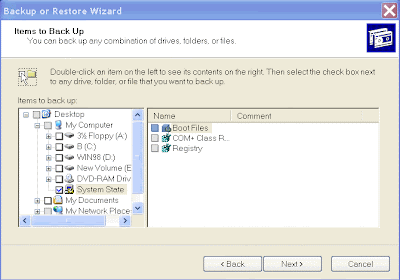2 October 2008Ultrasonic humidifiers have been used extensively in temperate as well as in tropical countries. They are used to keep room humidity at comfortable level. They are pretty cheap and simple to operate. They need little maintenance except for the frequent topping up of the water. This article will describe the workings of various electrical and electronic components and touch on how to repair some common faults.
What is Ultrasonic humidifier (UH) ?Please refer to this
article What are the components inside the humidifier?
What are the components inside the humidifier?The humidifier consist of the following components
a) Control Panel (analogue or digital)
b) Mechanical fan
c) Water container and water level sensor
d) Electronic ultrasonic Generator
e) The piezo-electric transducer

 How do these work?a) Control Panel
How do these work?a) Control PanelAnalogue or digital type. This panel will allow users to control the amount of mists generated and/or speed of the fan. Some humidifiers have built-in humidistat that will regulate the amount of mist to a preset control;
b) Mechanical fanThis is usually a small mechanical fan used to distribute the mists. It is made from using a small single-phase shaded pole a.c. motor with a centrifugal fan attached.
 c) Water container and water level sensor (aka float switch)
c) Water container and water level sensor (aka float switch)The water container is usually an inverted container that can hold about 4 to 5 litres of water, enough for one day’s operation. The top end of the container is always sealed such that as water is being drawn from the container, it will create a vacuum on top of the container which will hold the water above the water level. All UH has a water level sensor or float switch that will stop the operation of the humidifier when the water level is low.
d) Electronic Ultrasonic GeneratorThis usually consists of a power switching transistor arranged as a
Colpitts oscillator to provide power to the piezo-electric transducers. The oscillating frequencies are around 0.8 MHz to 1.7 MHz.

e) The Piezo-Electric Transducer
Connected to the output of the electronic ultrasonic generator is the
peizo-electric transducer, which looks like a 50 cts coin or a lithium battery of that size.
During the humidification process, the peizo-electric transducer will vibrate at ultrasonic speed and water will be broken up into mists of 1 to 3 microns when they come into contact with the vibrating transducer.
What Can Go Wrong?When the humidifier stop working, it could be due to many factors but this article will concentrate on one of the most common problem: the humidifier is working but it is just not strong enough to create the mist. Some water circulation is seen on top of the transducer.
There are a few reasons:a) Clogged TransducerThis normally don’t happen if one uses soft water as recommended and cleans the transducer often. However, should a de-scaling required, do not use any chemical or soap or scrap the transducer surface with any hard objects. They might attack or damage the thin coatings of the transducer. A soft brush, brushing the surface may be sufficient. If this cannot remove the scaling, try some soft cleaners such as alcohol or other soft cleaners and rub against the surface of the transducer softly.
Handle the transducer with care. Transducers are made of ceramics. They are hard and very brittle. They will break into pieces once they fell onto the floor.
One can buy replacement ceramic disc from some aquarium shops that sell mist makers for fish tanks. They are packed together a key as shown and they are pretty cheap.

b) If the cleaning of the transducer does not work, it is likely that the oscillator may be at fault. It might be due to the following reasons:
1) Faulty Power Supply Unit The power supply is from a 35-40 volts power transformer. This power is fed to a set of 4 diodes that form a rectifier bridge. The output of the bridge is filtered by a smoothing capacitor in the range of 2 to 50 uF (C5 or capacitor connected immediately after the bridge). If this smoothing capacitor is faulty, it will not deliver enough d.c. power to the oscillator circuit
 2) Faulty Oscillator
2) Faulty OscillatorThe capacitors that form the oscillator could have been faulty and as a result, the oscillator is oscillating at other frequencies that could not deliver enough power to the transducer
3) Fault Power Switching TransistorIf this transistor is faulty, it is likely that oscillator will not work. Check the transistor for proper operation. Not every transistors are made the same for operation. Equivalent transistor may not work properly.
Schematic Circuit of other Brand
Other reference circuitary on application of ultrasonic transducers can be found here.
Fuji Ceramics CorporationNote: If you find schematic diagram of other brands, please email me.
4) Bad Contact at the Transducer
The transducer is usually connected to the circuit through a spring to allow the transducer free to vibrate. Bad electrical contact between the spring and the transducer may cause the unit to stop working. Dismantle the transducer and polish the contact surfaces at the transducer and the spring to ensure good electrical contact.
Related Articles
1.
Soft Water Supply for Ultrasonic Humidifiers2.
Cut Electricity Bills by up to 90%




















































